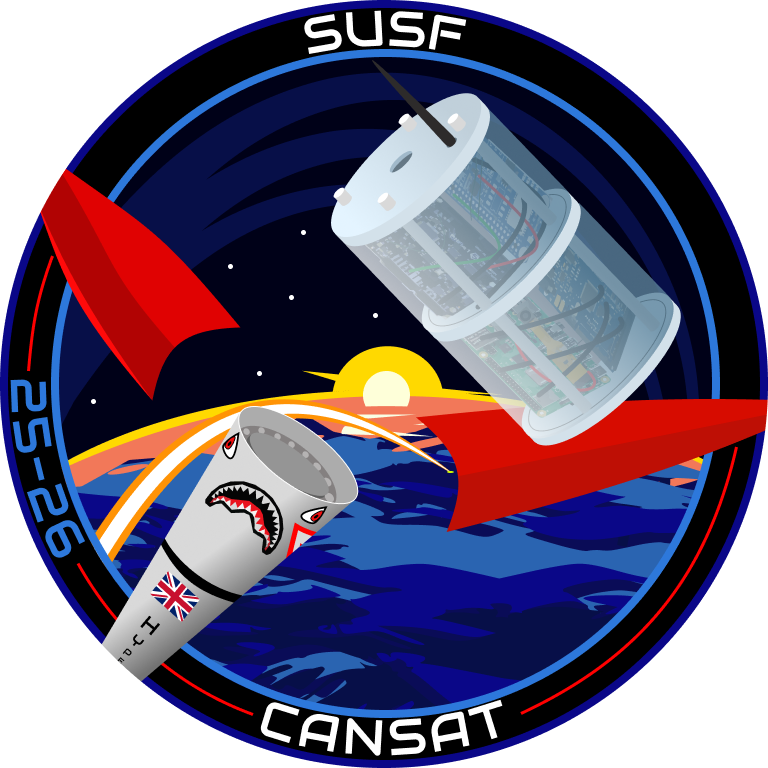
What many people don’t know is that SUSF was founded during a process of high-altitude balloon launches up to 30km. These flights aimed to take pictures of both Earth and Space features, but they also allowed invaluable atmospheric data to be collected along the way. Adding to this data-collection frenzy; the CanSat project was born. CanSats are deployable capsules, no bigger than a can of baked beans, that are packed with intricate electronics and various sensors. Housed snugly inside their launch vehicle, their deployment allows a free flight whilst they collect important atmospheric data.
Since 2019, SUSF’s CanSat team has taken part in various CanSat competitions. Independently; both in UKRA events and also in Spaceport America events; and also as a rideshare, in Mach-21 and more recently in Mach-24.

Initial CAD of CanSat electronics concept

CAD of a concept CanSat’s components in its capsule body

The final iteration of CanSat’s internal structure and electronic components, as flown in 2024

The CanSat team worked flawlessly to ensure that their multitude of sensors could be packaged securely into their housing. Shown in this picture is the final assembly of the “Fenrir” CanSat, circa June 2024

Awaiting launch at the Mach-24 competition in July 2024, CanSat sits inside the chequered segment on HPR’s rocket. This flight – the first of this new CanSat, named “Fenrir” – would see the whole stack soar to 3km, giving an ample descent for atmospheric data collection.
The CanSat team is already iterating on their most recent design, and will launch again in 2025 on at least one SULRE launch and at least two HPR launches
